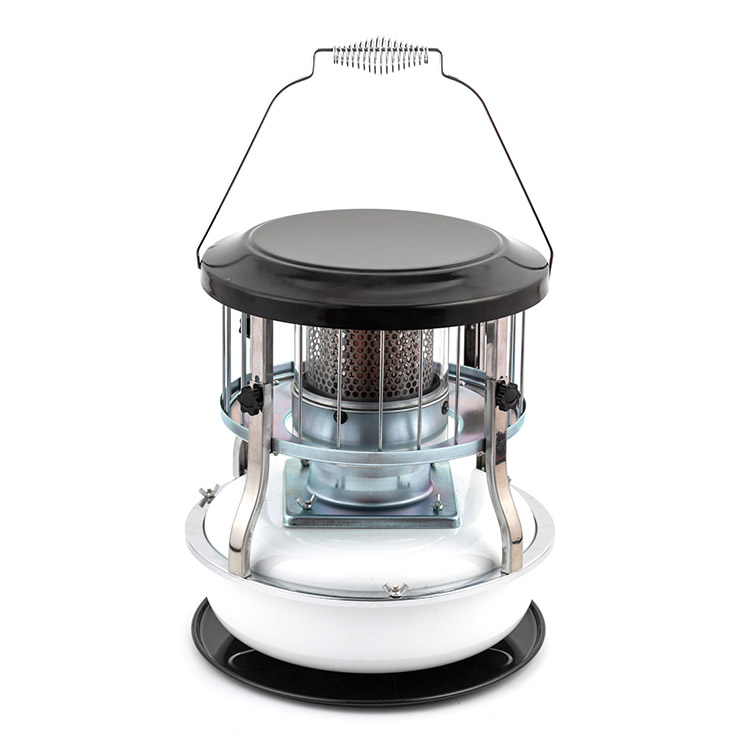Glass Chimney Kerosene Stove is a type of stove that utilizes kerosene as its fuel source. It is called a "glass chimney" stove because it is equipped with a glass cylinder that surrounds the flame. This cylinder acts as a chimney, which allows for better combustion and also protects the flame from wind and air currents. The stove is commonly used in areas where electricity is not available or as a backup during power outages. Below are some of the related questions about Glass Chimney Kerosene Stove.

What are the advantages of a Glass Chimney Kerosene Stove?
One of the main advantages of a Glass Chimney Kerosene Stove is its affordability compared to other types of stoves. It is also highly efficient, as it burns the kerosene cleanly and produces a steady flame that is easy to control. Additionally, it is portable and easy to move around, making it an ideal option for outdoor activities such as camping.
What is the lifespan of a Glass Chimney Kerosene Stove?
The lifespan of a Glass Chimney Kerosene Stove depends on its usage and maintenance. With proper care, the stove can last for many years. Some of the parts may need to be replaced over time, such as the wick or the glass chimney. It is important to follow the manufacturer's instructions for maintenance and to use high-quality kerosene to ensure the stove's longevity.
How much does a Glass Chimney Kerosene Stove cost?
The cost of a Glass Chimney Kerosene Stove can vary depending on the brand, model, and features. On average, it can range from $50 to $150. It is important to do research and compare prices before making a purchase to ensure you are getting the best value for your money.
Is it safe to use a Glass Chimney Kerosene Stove indoors?
While Glass Chimney Kerosene Stoves are designed to be used indoors, it is important to follow safety precautions. The stove should be placed on a level surface away from flammable materials such as curtains or paper. It should also be properly ventilated, such as by opening a window, to prevent carbon monoxide buildup. It is also important to never leave the stove unattended while in use.
In conclusion, Glass Chimney Kerosene Stove is an affordable, efficient, and practical option for those who need a reliable source of heat and cooking without electricity. It is important to use and maintain the stove properly to ensure its longevity and safety.
Ningbo Zhongze Electronics Co., Ltd. is a company that specializes in the production of Glass Chimney Kerosene Stoves and other household appliances. With over 10 years of experience in the industry, they are committed to providing high-quality products at competitive prices. For inquiries or orders, please contact their sales team at sales1@nbzhongze.com. Visit their website at https://www.zhongzeelectronics.com for more information.
Scientific References:
Akpan, E. O., and Jen, T. C. 2012. Thermal efficiency analysis of kerosene stove prototype. Renewable Energy, 44: 217-221.
Enweremadu, C. C., Kim, J. H., and Kim, M. H. 2015. Performance and emission characteristics of kerosene stove for household energy supply. Applied Energy, 157: 273-279.
Kumar, A., Sahoo, P. K., and Sahoo, S. C. 2018. Combustion and emission characteristics of kerosene as an alternative fuel for household stoves. Renewable and Sustainable Energy Reviews, 81: 3197-3206.
Li, J., Wang, X., and Li, Y. 2014. Numerical simulation of a wick-based kerosene stove. Energy Conversion and Management, 88: 833-839.
Zhang, J., Duan, L. M., Zhong, S. L, et al. 2013. The performance improvement of a kerosene stove by metal foam porous burner. Energy Conversion and Management, 71: 70-75.
Zhong, L., Chen, C., Yang, Y., et al. 2018. The combustion performance and emissions of a kerosene stove with a spiral air supply system. Fuel, 211: 522-529.
Ma, X., Jiang, J., Zhang, L., et al. 2014. Simulation and optimization of kerosene stove combustion based on CFD technology. Renewable Energy, 68: 338-347.
Gupta, S., and Talukdar, P. 2016. Impact of low-cost kerosene stove intervention on time allocation of households: evidence from rural India. Energy for Sustainable Development, 33: 146-152.
Ouyang, L., Li, G., Li, J., et al. 2018. Enhancing of energy efficiency and stability in a kerosene vaporization stove using Cu-doped Ni nanocatalyst. Applied Energy, 220: 306-315.
Hou, Y., Hu, P., Yan, H., et al. 2019. Evaluation of in-use performance of improved kerosene stove: A pilot study in rural China. Energy, 168: 90-98.
Li, R., Yelverton, T., and McCracken, J. P. 2013. Black carbon emissions from biomass and kerosene burning in rural Uganda. Environmental Science & Technology, 47(11): 6181-6187.





